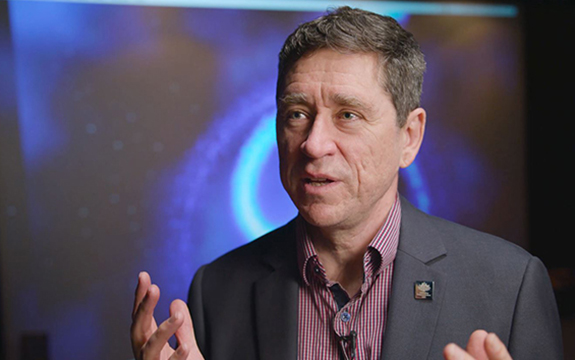OzGRav Director congratulates 2017 Nobel Physics prize winners

In Summary
- ARC Centre for Excellence for Gravitiational Wave Discovery congratulates US physicists Rainer Weiss, Kip S Thorne and Barry C Barish
- The discovery of gravitational waves is one of the greatest intellectual achievements in physics
The Australian Research Council Centre of Excellence for Gravitational Wave Discovery (OzGrav) has congratulated the winners of this year’s Nobel Prize in Physics for the leadership roles they played in the discovery of gravitational waves.
The Nobel Assembly at Karolinska Institutet has awarded the 2017 prize to US physicists Rainer Weiss, Barry C Barish and Kip S Thorne "for decisive contributions to the LIGO detector and the observation of gravitational waves".
The discovery of gravitational waves is one of the greatest intellectual achievements in physics.
The collaboration that this year’s Nobel Laureates helped put together has opened a new window on the Universe and verified that Einstein’s 1915 masterpiece, the General Theory of Relativity, is an accurate description of gravity and the motions of the stars and planets.
Just last week the Advanced Laser Interferometer Gravitational-Wave Observatory (LIGO) announced the discovery of a fourth burst of gravitational waves from black holes with their Virgo partners.
OzGrav is proud to be part of this international team as it continues to refine and enhance the Advanced LIGO detectors, extending our knowledge of the Universe.
OzGrav Director, Swinburne’s Professor Matthew Bailes, paid tribute to the perseverance of the LIGO leadership.
“When I first heard talk of the LIGO detector during a visit to Caltech it seemed fanciful,” he says.
“The technology required seemed too ambitious, and the targets very uncertain. But today’s prize is a fitting reward to the visionaries who persisted over decades with the scientific, technological, sociological and political challenges of building one of the great observatories of the world.
“It has taken the pulse of the Universe and opened a treasure trove for fundamental physics research.”
OzGrav scientists and engineers are part of the 1000-member LIGO Scientific Collaboration that helped discover gravitational waves.
Many of OzGrav’s Chief Investigators have dedicated almost their entire scientific careers to the development of the technology and methods to advance the field and will be delighted by this announcement.
OzGrav is headquartered at Swinburne’s Hawthorn campus. A new on-campus $4 million supercomputer will power the search for gravitational waves.

